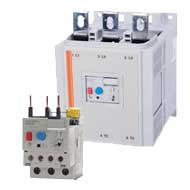Literature
Technical Tips & FAQs
Heat Dissipation rates for CEP7 and CT7N/CT8 Overload Relays
Question: What is the heat dissipation rate of the CEP7 overload relays? How does it compare to other types of overload relays?
Answer: Sprecher + Schuh CEP7-ED_ and CEP7(S)-EE_ overload relays dissipate heat on a much more efficient basis than traditional thermal or eutectic alloy overload relays.
CEP7 relays dissipate heat at the following rates:
| Catalog number | Maximum Heat Dissipation (Watts) |
| CEP7-ED1AB or CEP7-EEAB | 0.03 |
| CEP7-ED1BB or CEP7-EEBB | 0.04 |
| CEP7-ED1_B or CEP7-EE_B (other than "A" or "B") |
0.53 |
| CEP7-EE_D | 0.73 |
| CEP7-EE_E | 0.78 |
| CEP7-EEGF | 0.87 |
| CEP7-EE_F (other than "G") | 3.52 |
| CEP7-EE_G | 8.94 |
| CEP7-EE_H | 15.53 |
For heat dissipation rates of the CT7N/CT8 thermal bimetallic overload relays, click Here.
In comparison, CT7N/CT8 bimetallic overload relays have a heat dissipation rate as much as 6 watts for a like size protection device in the CEP7-ED_ range. Since ambient temperature plays a factor on the trip time, thermal based overload relays actually contribute more heat, which could lead to nuisance tripping. Because CEP7 rates are much lower, less heat is generated from the operation of the motor protection device, resulting in more accurate measurements and faster overload detection and protection.
Categories: Motor Protection
1708 ROK31222

